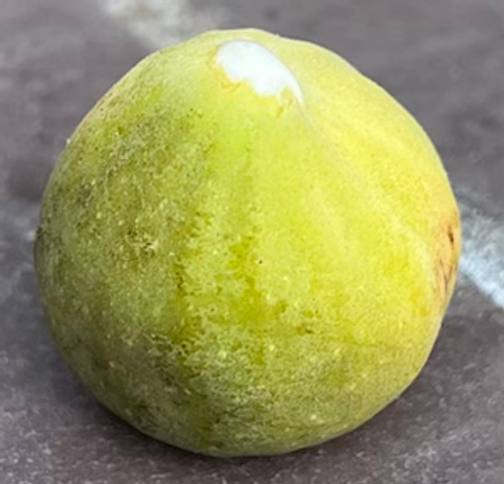The Abundant Fig: A Gift of Autumn
- Geetanjali Chakraborty

- Sep 24, 2023
- 2 min read
Updated: May 2, 2024
As autumn graces us with its presence, the fig tree in our backyard bestows upon us a plentiful harvest of figs, evoking gratitude for nature's abundance. The more I pluck, the more it generates. Come to think of it, that's how a nursing mother produces milk. The more milk the baby consumes, the more mother's body is able to generate. Eating seasonal and local is the foundational principle in Ayurveda. Therefore, whatever is available fresh is the right food for you in that season.

Figs are thought to have come to us from the Near East, although Northern India has also had fig cultivation. It is referenced as Udumbar in the source text Bhavaprakash. This variety of fig is ficus glomerata which is a little different from the one in our backyard, ficus carica. You are more likely to encounter ficus carica in the Bay Area and ficus glomerata in India. Ficus glomerata is a wild variety and grows all over India.
All ficus varieties according to Ayurveda texts have medicinal uses. There are a lot of different varieties of ficus but we will focus on ficus glomerata and ficus carica. The bark of ficus glomerata is astringent and cooling in nature. It has been known to heal wounds and is anti-inflammatory (due to its astringent and cooling nature). The ripe fruit has a similar taste to the figs we eat.
According to the source text Bhavaprakash, the fig fruit is great for dealing with fatigue thanks to its guru property. It is sweet (madhur) and cooling, which makes it good for pitta issues, or heat symptoms that you might feel during Fall. As they say, there is no free lunch, so if you are trying to lose weight, this fruit wouldn't be a great idea as it is heavy (guru). And, Ayurveda is ultimately all about moderation. Just because the fruit is medicinal, it is not advisable to eat meals that contain only figs. One or two a day while in season is the ideal quantity of consumption during this season.
Aspect | Attributes |
Medicinal Properties | Beneficial for combating fatigue due to its heavy (guru) property |
Sweetness and Cooling Nature | Aids in balancing pitta dosha during Fall |
Weight Management | Not recommended for weight loss efforts due to its heavy (guru) nature |
Intake Suggestion | Use in moderation, excessive use not advisable |
Recommended Consumption | 1-2 figs per day when in season |
Figs: Beyond the Fruit
Ayurveda gives us foundational principles that allow us to build intuition about our food even if it is not explicitly mentioned in the source texts.
One important principle is samanya vishesh, or "like increases like". I reflected on this and the fact that a key characteristic of the fig is that it is full of seeds. By Ayurvedic logic, I thought this might help with improving sperm count.
A quick Google Scholar search and sure enough, research has shown just such an effect (see Paper 1 and Paper 2). It is impressive to see how the foundational frameworks help us build testable intuition.
When plucking the fig fruit, you will notice a sap. That sap, as it turns out, has been studied for its tendency to cause dermatitis, and it has been conjectured that this is primarily due to the photoactive compound psoralen. However, this compound is not in the fruit. The sap has also been studied for its effect on hookworms.
Enjoy the fig this Fall! You should be able to find it aplenty in your local farmer's market.







Comments